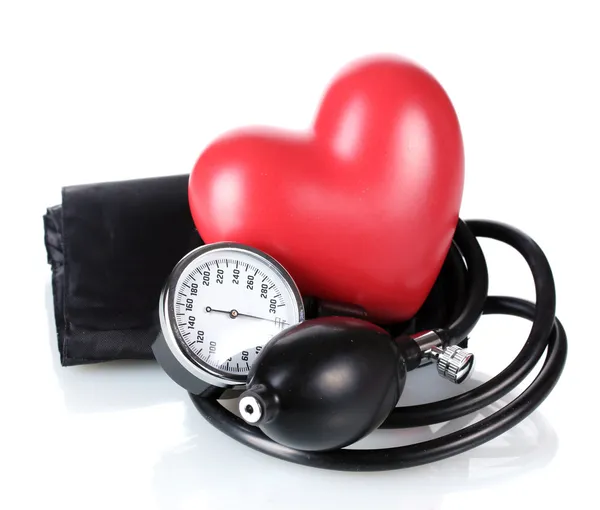
Diagnosed with Cancer? Your two greatest challenges are understanding cancer and understanding possible side effects from chemo and radiation. Knowledge is Power!
Learn about conventional, complementary, and integrative therapies.
Dealing with treatment side effects? Learn about evidence-based therapies to alleviate your symptoms.
Click the orange button to the right to learn more.
- You are here:
- Home »
- Blog »
- side effects ID and prevention »
- Chemotherapy-induced Hypertension (BP)
Chemotherapy-induced Hypertension (BP)

“New-onset hypertension was observed in about one-third of 25,090 patients with various cancer types…Across all cancers, chemotherapy exposure was associated with a 2–3.5-fold increase in risk of any degree of hypertension…”
According to the study linked below, “new-onset hypertension (BP)” can result from chemotherapy exposure of any kind for across all cancers.
A diagnosis of multiple myeloma in early 1994 led to local radiation, induction chemotherapy, high-dose cytoxan and an autologous stem cell transplant, all in 1995. I used to think that it was cardio-toxic chemotherapy that was the main cause of my long-term and late stage side effects.
In fact, though I titles this post chemo-induced hypertension” the overall issue is cardiotoxicity which led to chemo-induced cardiomyopathy with chemo-induced hypertension being one specific result.
Additional health challenges resulting from cardiotoxicity and chemo-induced cardiomyopathy are:
- Atrial Fibrillation
- thrombosis
- (left ventricular weakness
to be specific. And the really sad thing is these side effects didn’t have to happen. Years of research and experience have taught me that there are a great many evidence-based therapies that I could have undergone, both at the time of my treatments or immediately following my conventional therapies, and I could have reduced or even prevented much/most of the damage.
The point of this blog post is to clearly establish chemotherapy-induced hypertension as well the damage done by chemotherapy to the heart and blood vessels and list cardio-toxic themed blog posts on PeopleBeatingCancer.org for you to read to learn about chemotherapy-induced hypertension, Cardiomyopathy and atrial fibrillation.
Most importantly, the point of this post is to highlight the evidence-based, non-toxic, non-conventional therapies shown to manage and even help chemotherapy-induced heart damage.
Specifically:
- Lifestyle therapies
- Nutrition
- Supplementation
I’ve been researching and writing about chemotherapy-induced hypertension for years.
- Cardiac Rehabilitation: Blood Pressure, Hypertension Mgmt w …
- Chemotherapy-induced Hypertension (BP)
- Chemo-Induced Hypertension Therapy
- Lower Hypertension… w/ Polyphenols
- Chemotherapy-induced Cardiomyopathy, Hypertension
- AFib, Hypertension, Stroke- Conventional or Non …
- Lower Blood Pressure w/ Evidence-based, Non-toxic Therapies
- Cardiac Rehab-Lower Blood Pressure-Nattokinase- Non-toxic …
Have you undergone cardio-toxic chemo or radiation? To learn more about evidence-based non-toxic therapies to help you manage heart damage including heart failure, Afib, or hypertension, scroll down the page, post a question or a comment and I will reply to you ASAP.
Thanks,
David Emerson
- MM Survivor
- MM Cancer Coach
- Director PeopleBeatingCancer
Recommended Reading-
- Conventional vs. Non-Conventional Cancer Therapies
- Cancer Genetic Testing Sounds Great… But Are Patients Living Longer?
- Multiple Myeloma Treatment- Answering “Why Me?”
Incidence of New-Onset Hypertension in Cancer Patients: A Retrospective Cohort Study
“New-onset hypertension was observed in about one-third of 25,090 patients with various cancer types…Across all cancers, chemotherapy exposure was associated with a 2–3.5-fold increase in risk of any degree of hypertension compared to periods of no chemotherapy; higher hypertension levels showed greater variability in relative risks by type and line of therapy but indicated an overall increase associated with chemotherapy exposure.
Etiology and management of hypertension in patients with cancer
“Moreover, various anticancer therapies have been reported to cause new elevated blood pressure or worsening of previously well-controlled hypertension…
We then review the common cancer therapies that have been associated with the development of hypertension, including
Cancer therapies with the potential to cause hypertension
- VEGF signaling pathway (VSP) inhibitors. …
- VEGF inhibitors. …
- Small molecule tyrosine kinase inhibitors. …
- Proteasome inhibitors. …
- Alkylating agents. …
- Glucocorticoids. …
- Non-antineoplastic immunosuppressive agents. …
- Other antineoplastic agents.
Conclusion
Cancer-related therapies are known to cause secondary hypertension as a side effect. New onset or worsening hypertension is a well-known potential adverse effect of VEGF inhibitors as well as other antineoplastic therapies…”Etiology and management of hypertension in patients with cancer
“Conclusion
Many studies have highlighted that the overall survival in patients with cancer is as much dependent on their comorbidities as it is on the stage of cancer at the time of diagnosis [123,124,125,126]. Cancer-related therapies are known to cause secondary hypertension as a side effect.
New onset or worsening hypertension is a well-known potential adverse effect of VEGF inhibitors as well as other antineoplastic therapies. Indeed, elevated BP can be used as a surrogate biomarker for the optimal anti-tumor effect of VEGF inhibitors [68, 69].
Importantly, the treatment of resultant hypertension does not compromise the outcome of cancer treatment [127]. For patients without other cardiovascular risk factors, BP goal is < 140/90 mmHg; whereas for patients who are at high cardiovascular risk, BP goal < 130/80 mmHg should be achieved.
Given the rapid development of new treatment regimens that counter the growth and spread of cancer and increase the longevity of patients, there is an urgent need to tackle non-cancer-related comorbid medical conditions, such as hypertension, that may interfere with successful cancer treatment.
Management of underlying cancer and non-cancer comorbidities must go hand in hand, and the joint efforts of the oncologist, cardio-oncologist, and primary care provider are critical to provide optimal care in these patients. The composite goal is to reduce cardiovascular events while achieving maximum benefits from cancer therapy.
Timely screening for hypertension, early diagnosis and prompt initiation of intervention, regular home BP monitoring, and close follow-up can reduce the burden of cardiovascular complications, leading to an improvement in the quality of life and overall survival in patients with cancer…”

